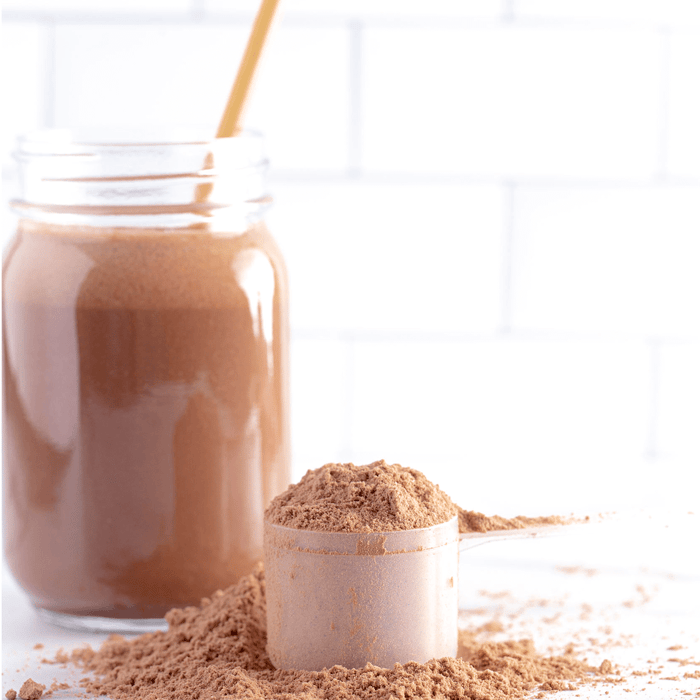What are Body Mass Index (BMI), Inches & Weight Measurements for Bariatric Surgery Patients?
Lifestyle
April 12th, 2019
What is Important? Is it Just a Bunch of Numbers?
As a bariatric surgery patient, you are constantly surrounded by numbers, but what do all of these numbers mean and which ones are important? Below we will review a few common metrics used in bariatric surgery, such as Body Mass Index (BMI), inches, and weight, and discuss their importance.
BMI - What is it? What Does it Mean?
Body Mass Index (BMI) is a number calculated from an individual's height and weight. BMI provides a reliable indicator of body fatness for most people and is used to screen for weight categories that may lead to health problems and/or conditions. You can calculate your BMI multiple ways. You can use a BMI calculator online like one from the National Institute of Health's website (1). The National Institute of Health also has a Body Mass Index Table you can use to determine you BMI as well (2). To use a BMI table, just find the appropriate height (listed in inches [in]) in the left-hand column labeled height. Move across to a given weight (listed in pounds [lbs], which have been rounded off). The number at the top of the column is the BMI associated with the given height and weight.
BMI Categories
You may notice that BMI is often categorized. A normal BMI refers to the least risk of chronic health conditions. The higher your BMI, the greater your risk for chronic health conditions. The opposite is also true: a BMI less than normal (i.e., underweight) may also increase your risk of chronic health conditions. The table below lists categories for various BMIs.
|
Category |
BMI (kg/m2) |
|
Underweight |
< 18.5 |
|
Normal Weight |
18.5 – 24.99 |
|
Overweight |
> 25 – 29.99 |
|
Obese, Class I |
> 30 – 34.99 |
|
Obese, Class II |
> 35 – 39.99 |
|
Obese, Class III (Morbid Obesity) |
> 40 – 49.99 |
|
Obese, Class IV (Super Obesity) |
> 50 |
Measurements – Why are they Important?
Many bariatric surgery patients record their measurements (in inches, which is why it is commonly referred to as “inches”) when they start a weight loss program and continue doing so on a monthly basis. This can be an additional tool when it comes to motivation as some patients report the scale not moving, while they are clearly losing inches. Tracking your measurements throughout your bariatric surgery journey will help to provide positive reinforcement for the changes you have initiated.
Muscle is more dense than fat. Therefore, a pound of muscle takes up less space than a pound of fat. In an ideal situation, bariatric surgery patients would add muscle mass as fat mass decreases. The result of this is the scale could potentially not move while fat mass is decreasing and the patient is getting healthier. The aforementioned scenario can be rather frustrating for patients whose only metric of success is the scale. Therefore, it is important to evaluate other metrics of success including tracking your measurements and recording your inches lost. It is important to remember that inches lost are as important of a measurement of success as pounds lost. By recording your changes in inches, you will obtain positive reinforcement for the changes you have implemented.
It must also be stated that losing pounds without losing inches is a red flag for losing muscle mass as opposed to losing fat mass. While this looks good on the scale, it does not provide the health benefits most bariatric surgery patients are trying to achieve. Losing muscle mass may make it harder to continue losing weight and maintaining that weight loss in the long run as your muscle mass helps to maintain your metabolism (i.e., how you burn calories). Muscle mass also helps with balance and strength, among other things, and this becomes extremely important as one ages in order to reduce the risk of falls.
Measurements – How, Where, and Accuracy?
There is little data available on the significance of any one specific measurement technique. However, it is important to remain consistent regarding location of measurements.
If you are taking your own measurements, it can be helpful to stand in front of a mirror so you can see the full course of the tape measure and make sure it is level. Alternatively, it may be beneficial to have your support person or bariatric surgery healthcare team take your measurements to ensure accuracy and precision. Some common measurements and instructions are included below.
- Bust (Women) – Place the measuring tape around the largest part of the chest. Be sure to keep the tape parallel to the floor.
- Chest (Men) – Place the measuring tape around the largest part of the chest, slightly underneath the armpit, while keeping the tape parallel to the floor.
- Waist (Everyone) – To provide the most consistent measurement over time, WC should be measured at the top of the iliac crest (i.e., top of the hip bone). This landmark is easily identified by placing your fingers on your lowest rib in the mid-axillary line (i.e., an imaginary line on your side under your armpit separating your chest and your back) and then sliding down until you feel the top of the iliac crest. This may require some pressure, but should not cause any significant discomfort. Be sure to keep the tape parallel to the floor. When measuring the waist, exhale and measure before inhaling again to get an accurate and consistent reading.
- Hips (Everyone) – To provide the most consistent measurement over time, hip circumference should be measured at the level of the greater trochanter (i.e., the top of the femur [i.e., thigh] bone). This landmark is easily identified by placing your fingers over the lateral (i.e., the side) aspect of the mid thigh and sliding up along the femur until feeling the prominent bulge of the greater trochanter. Place the tape measure at this level and measure around while being sure to keep the tape parallel to the floor.
- Thigh (Everyone) – Measure the distance between the kneecap and the bend of your upper leg and hip. Measure the thigh at half that distance (i.e., half the length of the upper leg). Make sure you keep all of your weight on the opposite leg when measuring (e.g., when measuring the right thigh, you should place your weight on your left leg).
- Calves (Everyone) – Measure at the fullest point in the calf (i.e., the widest circumference).
- Upper Arm (Everyone) – Measure on the arm at half the distance between the top of the shoulder and the elbow (i.e., this should be around the bicep area).
- Neck (Everyone) – Measure around the largest part of the neck.
Tips for Taking Measurements
Below are some common tips to ensure you take your measurements precisely and accurately.
- Be sure to stand tall with muscles relaxed and feet together.
- When measuring, apply constant pressure to the tape to prevent sagging without pinching the skin.
- Use a flexible measuring tape (i.e., plastic or cloth).
- Measure under the same conditions (i.e., wear the same clothes or a lightweight gown).
- If you have to take your own measurements, do so in front of a mirror to ensure the tape measure is positioned correctly.
- The exact place for these measurements will vary from person to person. To ensure accuracy and precision, remember to take them in the same place on your body every time.
- Measure only on one side of the body (e.g., right side only) and be sure to measure that side every time.
- Record measurements in centimeters (cm) to provide better representation of changes over time.
- Keep a record of measurement changes over time.
Waist Measurement
Waist circumference (WC) is the only measurement which is strongly associated with metabolic syndrome and cardiovascular risk. In women and men, a WC greater than 35-in (88 cm) and 40-in (102 cm), respectively increases the risk of heart disease, diabetes, and stroke (3).
Graphing Your Weight and Your Success
It is normal, even as a bariatric surgery patient, to experience ups and downs with your weight and resultant weight loss. However, it is important to look at the overall trend. By graphing your weight, every time you weigh, it will help to see if the overall trend is up (i.e., gaining weight) or down (i.e., losing weight). This may help you to adjust your healthy eating plan and physical activity plan accordingly (after speaking to your bariatric surgeon).*
Do not let all of these numbers and recommendations make your head spin. Simply think about everything as improvement and progress. While you may not have the “perfect” or “ideal” BMI at this point in time, if you are working towards reducing your weight, losing inches, and overall improving your health, then you are doing amazing things! If you are just getting started now, take your starting measurements, weight, and calculate your BMI so you can track your progress. Many post-bariatric surgery patients will more than likely share with you that these numbers can be a great motivator and help you to stay on the path to success. If you are further out from your surgery and never took your initial measurements and weight, then start today to track your way to health and wellness!
It is also important to mention that success is more than just numbers! Success is different to each person. Some questions to ask yourself might include: 1) Are you off of certain medications (i.e., blood pressure, diabetes, high cholesterol medications, etc.)?, 2) Are chronic health conditions under control?, and 3) Are you able to walk up a flight of stairs without feeling winded? These are amazing quality of life parameters that may be achieved with bariatric surgery, weight loss, and improvements in health.
* A healthy eating plan and physical activity plan should be viewed as an individualized regimen based upon each patient’s individual medical history and physical limitations. Patients should follow the instructions of their bariatric surgery team. Patients should also be sure to follow-up with their bariatric surgery team at frequent intervals as recommended.
References:
1. National Institute of Health National Heart, Lung, and Blood Institute. Calculate Your Body Mass Index. https://www.nhlbi.nih.gov/health/educational/lose_wt/BMI/bmicalc.htm. Accessed October 13, 2020.
2. National Institute of Health National Heart, Lung, and Blood Institute. Body Mass Index Table. https://www.nhlbi.nih.gov/health/educational/lose_wt/BMI/bmi_tbl.pdf. Accessed October 13, 2020.
3. National Institute of Health National Heart, Lung, and Blood Institute. Metabolic Syndrome. https://www.nhlbi.nih.gov/health-topics/metabolic-syndrome. Accessed October 13, 2020.




